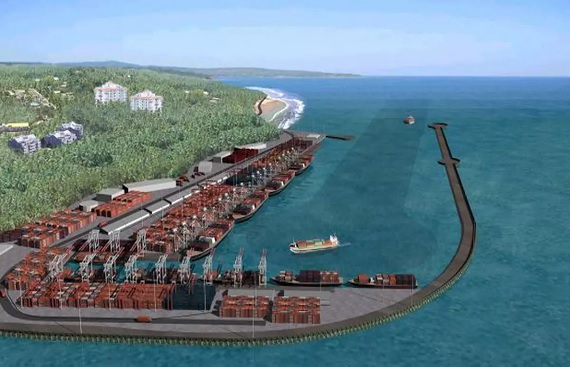Adani's Vizhinjam Port is Set to Expand Capacity with Launch of Second Phase

Indian Prime Minister Narendra Modi is set to open the second phase of Adani Group's enormous port project in Kerala on Friday, which is indicative of the strong political support for billionaire Gautam Adani as he faces an ongoing US bribery investigation.
The Vizhinjam transshipment terminal, which went on stream in July and already handled about 250 container ships, is estimated to draw a further investment of about Rs 9,500 crore ($1.1 billion), which will triple the port's capacity, according to insiders who spoke on condition of anonymity. Modi's backing not just adds to the Adani group, which has interests from ports to power, but also indicates that the fear of the US indictment might be fading with Adani's group resuming its acquisition-led aggressive growth path back home.
The Vizhinjam port, which Modi will be inaugurating formally on May 2, is located strategically just 10 nautical miles off main global shipping lanes and is projected to have an annual capacity of as much as 5 million TEUs, according to a full-page advertisement by Adani Ports & Special Economic Zone Ltd. The entire investment in all phases of the project is estimated to be approximately 180 billion rupees.
With its strategic location close to major international shipping lanes and natural depths of up to 20 meters, Vizhinjam can accommodate the biggest container vessels, which have long skirted India for ports in Colombo, Dubai, and Singapore.
Afaq Hussain, a director at the New Delhi-based consultancy firm Bureau of Research on Industry and Economic Fundamentals, said that with India's growing trade volumes with the rest of the world, the port will play an important role in reducing supply chain risks for Indian imports and exports. For Modi, the deepwater transshipment terminal is also geopolitically significant as it places India on the world map of maritime trade, which is presently dominated by China. Around 75% of India's transshipped cargo has been processed through foreign ports.
Indian ports are said to be losing a prospective annual revenue of $220 million because of this, with businesses paying extra of $80 to $100 per container, sources said.
Key Routes
The Vizhinjam seaport is expected to boost the flow of transshipment traffic into India and along significant corridors connecting the US, Europe, Africa, and East Asia. Hussain noted that most of India's cargo is now being transshipped from the Colombo port, and Vizhinjam can reduce India's dependence on this port, which has a substantial Chinese presence.
In March, Geneva-based Mediterranean Shipping Co. added Vizhinjam to its Jade shipping service route from Europe to Asia, connecting ports in China, South Korea, Singapore, Spain, and Italy, as confirmed by an Adani Group spokesperson.
Hussain further added that if complete operations begin as scheduled by 2028-29, the terminal can significantly improve cargo flow through Adani's vast network of ports and terminals on both the east and west coasts of India.
